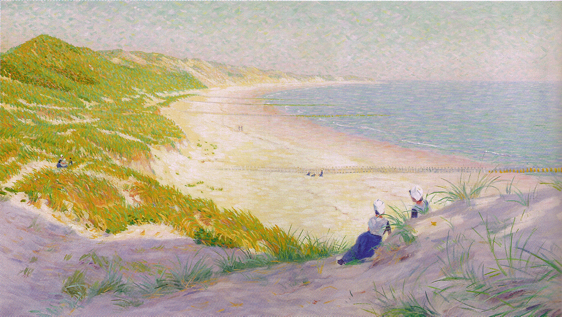Despite the fact that the three medieval villages Egmond aan Zee, Egmond aan den Hoef, and Egmond‐Binnen had been visited and painted by artists such as Ruysdael and Van der Heck for centuries, the art colony truly took off at the end of the 19th century with the arrival of Americans George Hitchcock and Gari Melchers. After receiving education in Paris and Düsseldorf, the gentlemen settled in the picturesque Egmond aan Zee, where time seemed to have stood still. Fishing boats on the beach and in the sea, manned by weathered faces depicting the harsh life of fishermen. These were images that the two Americans lovingly used as subjects in their early works.
After building their own studio on a dune top, Hitchcock started his Art Summer School, giving friends and interested parties a chance to study under him. This resulted in beautiful paintings by, among others, Alice Blair Ring, Hans Hermann, Thamine Groeneveld, and James Jebusa Shannon. As fishing gradually disappeared from the village and tourism began to rise, the painters ventured further inland and found in Egmond aan den Hoef and Egmond‐Binnen stunning, colorful flower fields and charming little churches. Fascinated by the beautiful light in North Holland, both Hitchcock and Melchers decided to settle in Egmond aan den Hoef, from where they continued their Art Summer School.
In 1905, Hitchcock decided to leave Egmond and began traveling on his house boat. He would eventually pass away on his boat in Marken in 1913. Gari Melchers stayed in Egmond for a few more years, after which he and his wife returned to the United States. With his many works, he would help establish several American museums. After his death in 1932, his own estate in Virginia was turned into a museum as well.
















